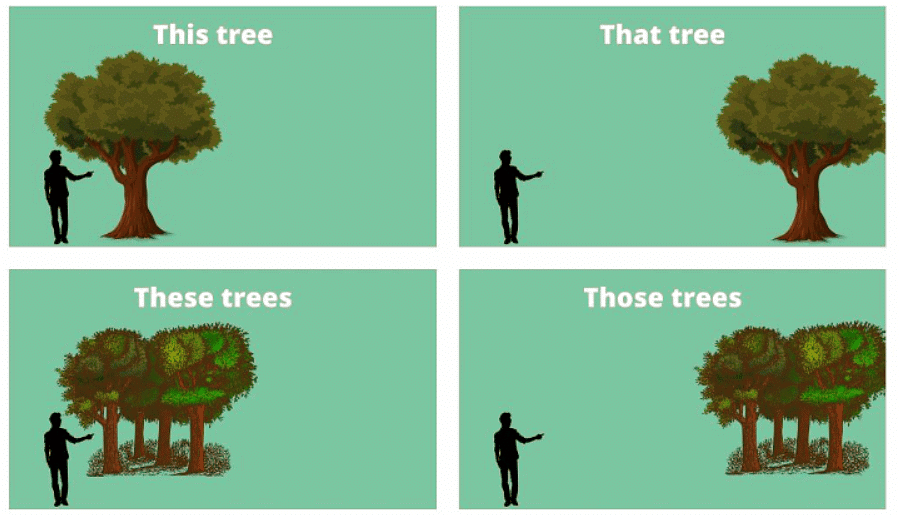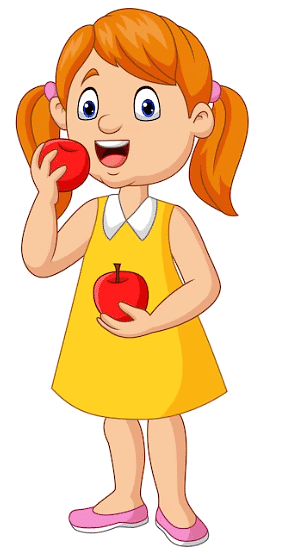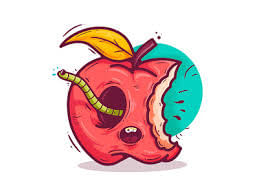This, That, These, Those | English for UKG PDF Download
Here are some example sentences of This, That, Those, These:
- This tree is beautiful.
- That tree is beautiful.
- These trees are beautiful.
- Those trees are beautiful
Look at the pictures to see the difference:

- We use This for something near and singular.
- We use That for something far and singular.
- We use These for something near and plural.
- We use Those for something far and plural.
When to use this, that, these, and those in a sentence?
Pointing to things
We use the words this, that, these, and those when we want to show things to other people. The main difference is if the things are singular or plural and also if they are near or far.
Example
- We use these words when the other person already knows what we are talking about.
- So…
- I used these above because you know that these words are This, That, These, Those.
Let’s look at more examples:
- You know that guy who lives next door to you… Well, I saw him in the pub yesterday.
- What do you call that restaurant that serves Indian food?
In the examples above the listener knows the guy and the restaurant that the speaker is talking about.
With time
We also use This, That, These, Those with time. They usually follow the same rules as above:
(This=near and singular.) Times close to now
Examples: This week, This year, This Thursday
What are you doing this week?
(That=far and singular.) Times far from now(in the past and future)
Examples: That week in 2006, That year, That Thursday
The wine was great in 1998… Oh yeah, That was a great year.
(These= near and plural.) Times close to now
Examples: These days,
There are a lot of problems in the world these days.
(Those= far and plural.) Times far from now(often the past)
Examples: Those days,
Those were the days. (often in a nostalgic way)
Where to use this and these in a sentence?
We often use this, that, these, and those at the start or at the end of a sentence. Let’s look at some example sentences.
- This door is locked.

- That garden looks lovely.

- Where did you buy that watch?
- What is happening to those men?
What are This, That, These, and Those called in English grammar?
- This, That, These, and Those are called demonstratives and show the distance between the speaker and the noun that they are talking about.
- Demonstratives function as pronouns and adjectives in a sentence.
Demonstrative Pronouns
Demonstrative pronouns usually come before a verb in a sentence or by themselves.
Examples:
- This is the best day of my life.
- These are the best apples I have ever eaten.

Examples of use by themselves:
- What are these?
- Who owns this?
Demonstrative Adjectives
Adjectives are used to describe a noun and usually come before a noun. It is the same with demonstrative adjectives. Demonstrative Adjectives are one of the four types of determiners in English. Examples:
- What happened to this car?
- This apple is rotten.

Negative Sentences
You don’t need to negate demonstratives If you need to make a sentence in the negative then you can put the verb in the negative.
Examples:
- This isn’t my favorite type of tea.

- Those aren’t real cats.
|
42 videos|47 docs|3 tests
|

|
Explore Courses for UKG exam
|

|






















